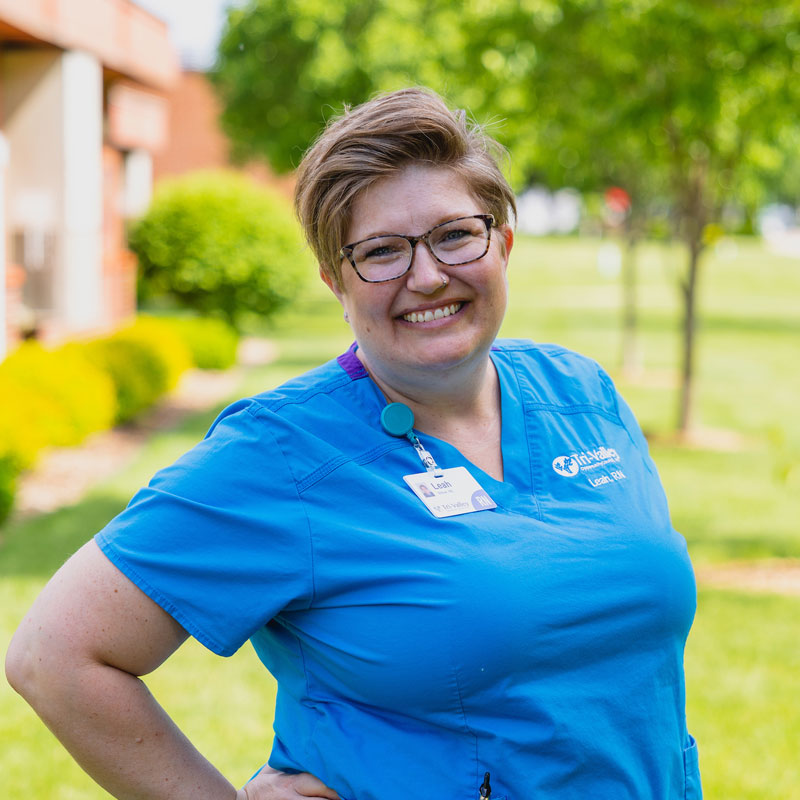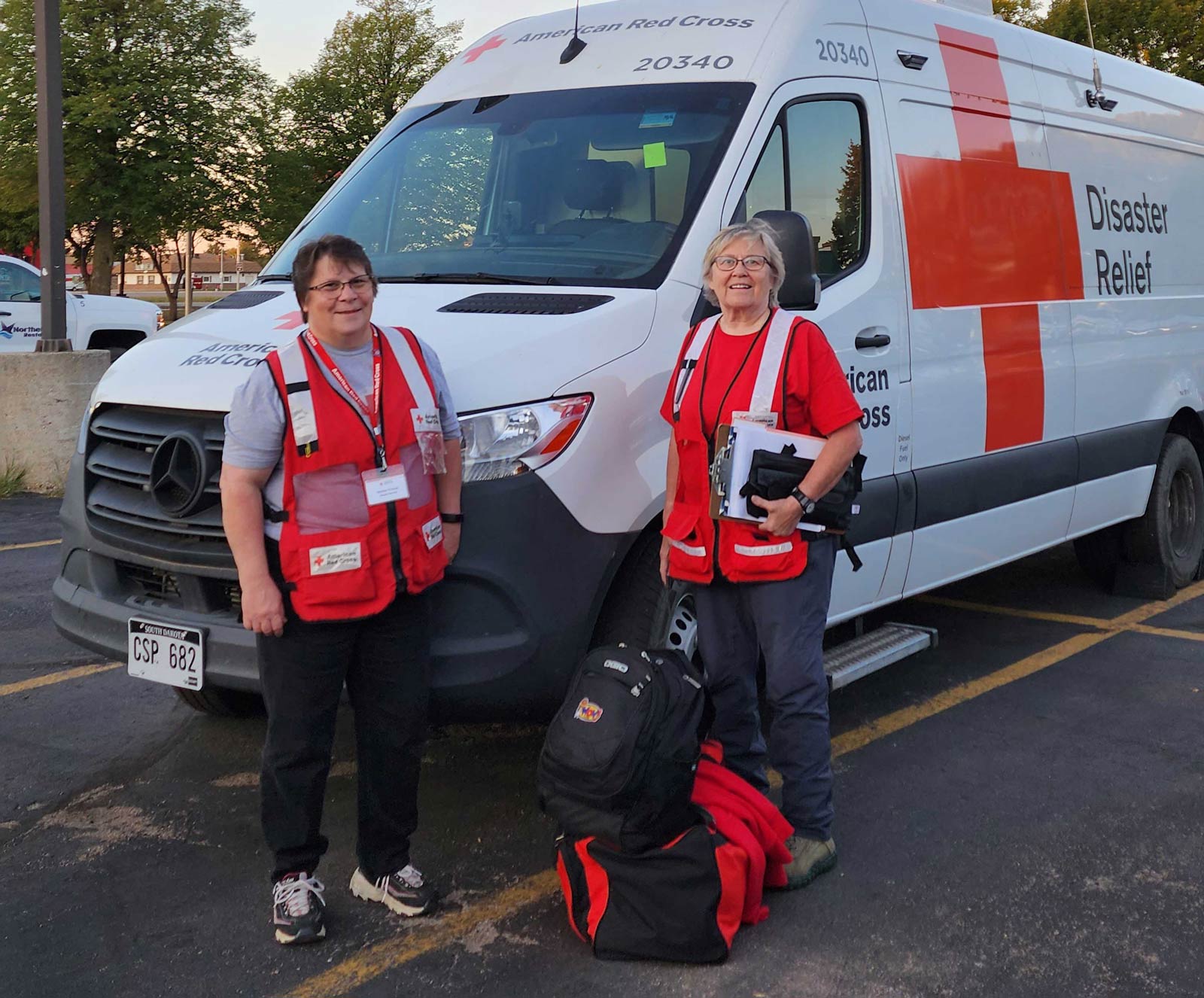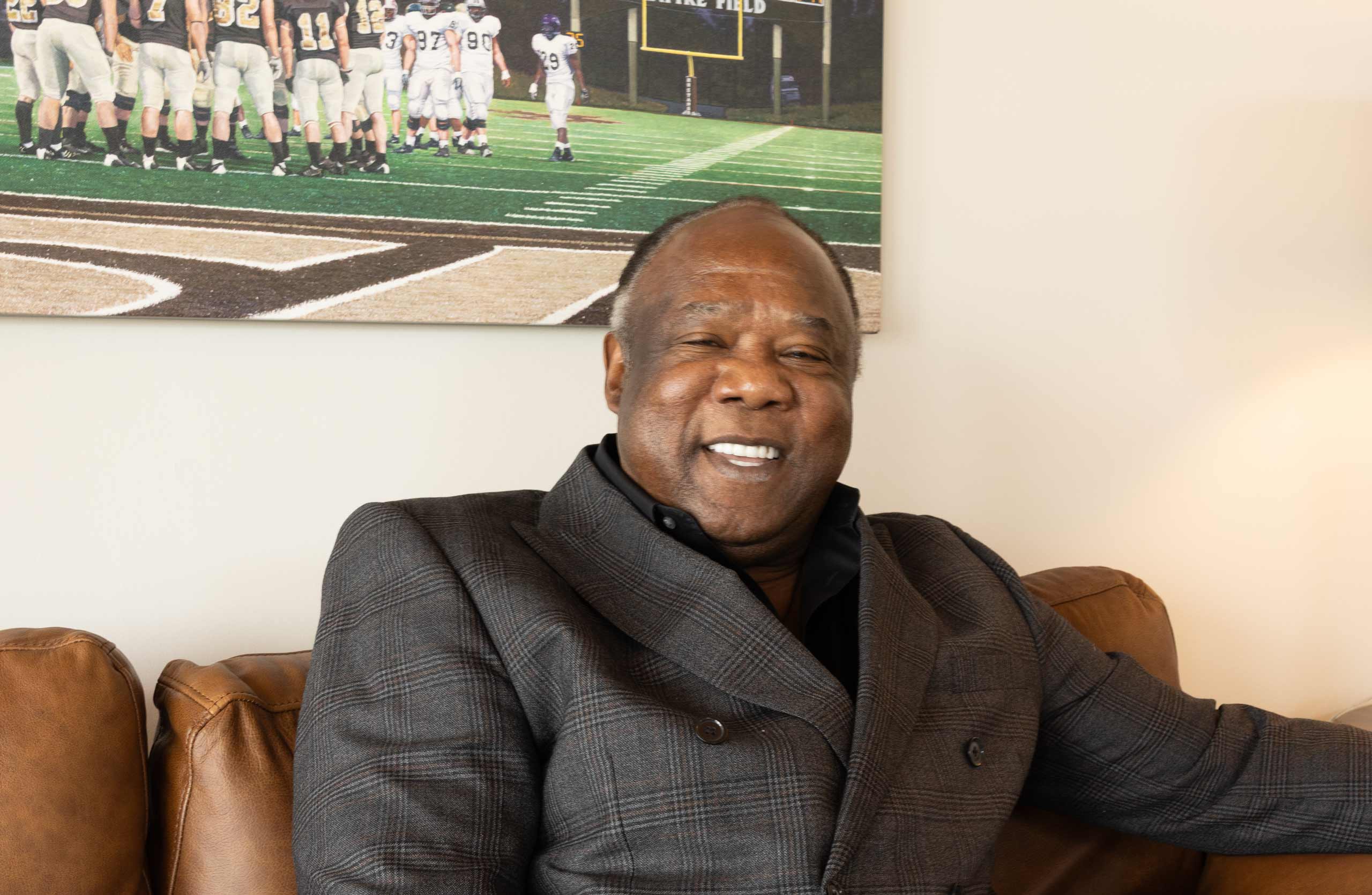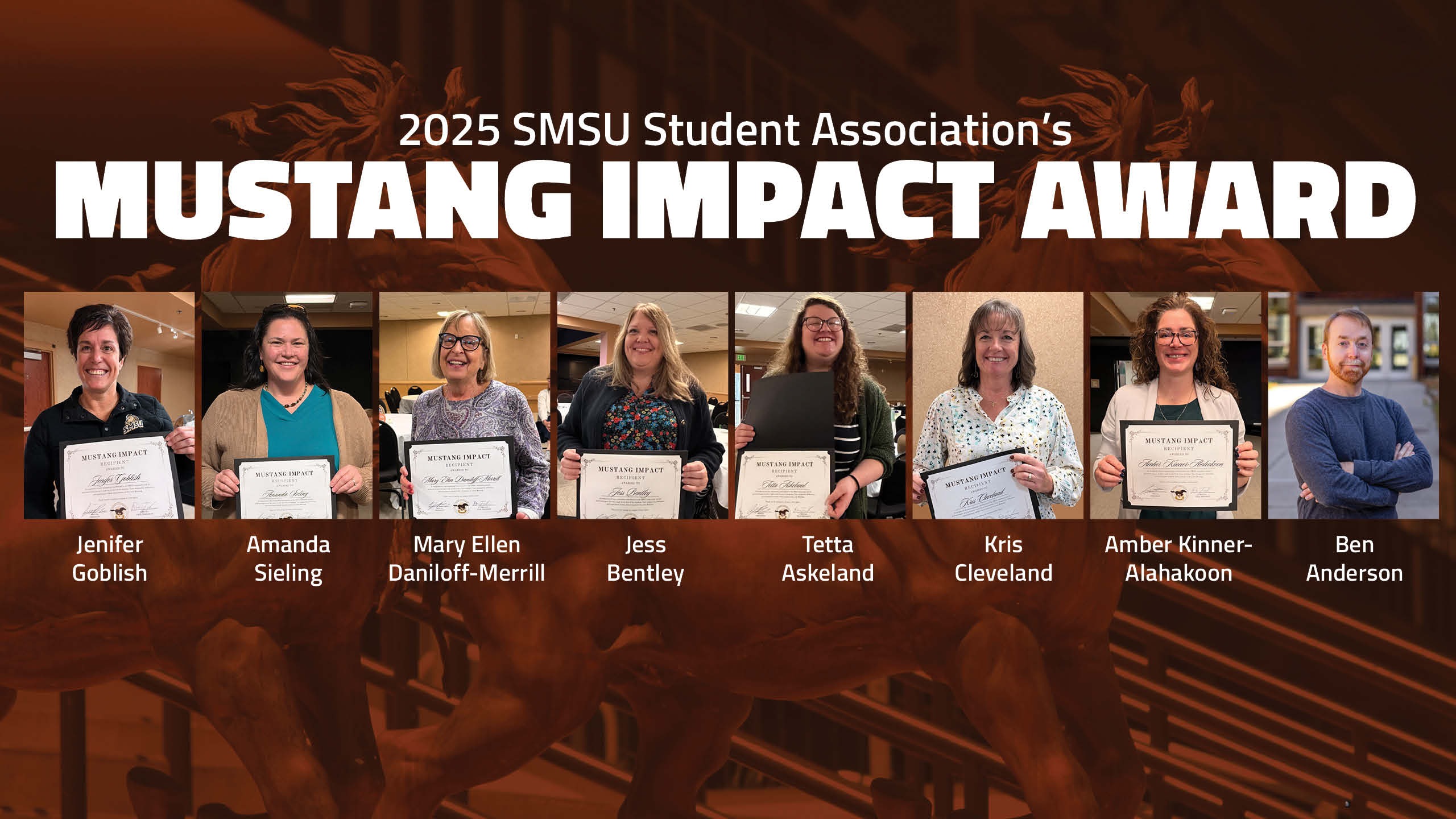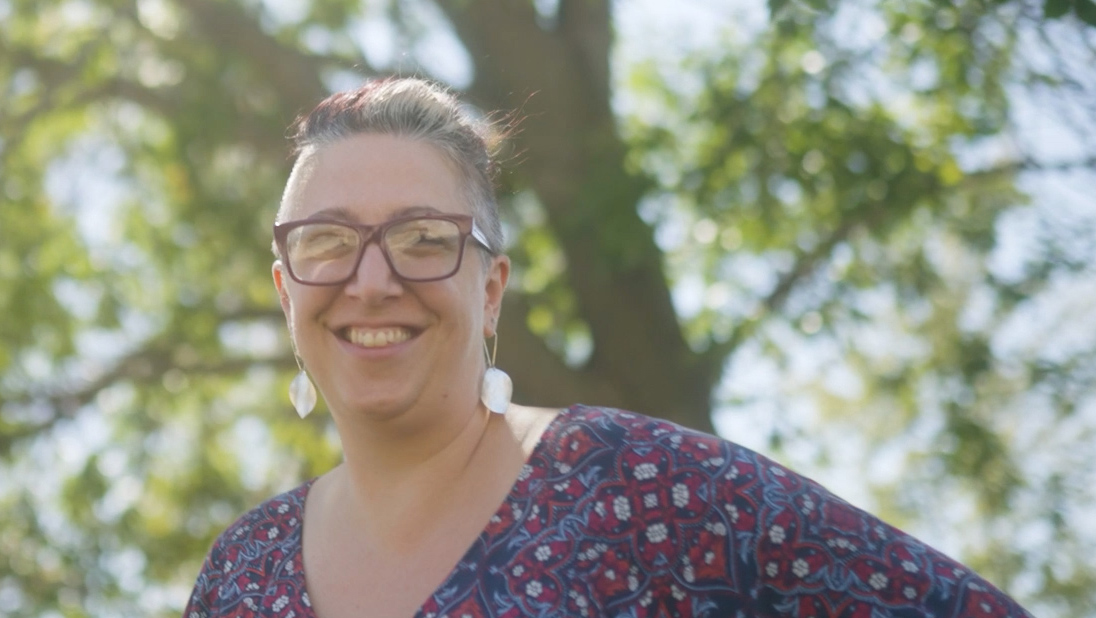Marilee Thomas Serves in American Red Cross After Hurricane Ian
Published Tuesday, November 01, 2022
The Mustang Family knows Marilee Thomas in her role as Office & Administrative Specialist Senior in the SMSU Dean’s Office. She’s also a highly engaged volunteer in the American Red Cross (ARC). In October, she spent time in Florida serving those in need following Hurricane Ian.
Hurricane Ian was a Category 4 hurricane that hit the southwest coast of Florida on Sept. 28 with maximum sustained winds of 150 mph, according to NOAA. Among the hardest hit communities were Fort Myers and Cape Coral. Ian moved across central Florida bringing major flooding to Orlando and Naples, where Marilee spent 10 days in early October. She’s a Mustang Making a Difference.
Marilee didn’t set out to become so involved in the American Red Cross. In her previous job at a college in northwest Iowa, she was asked to serve as the advisor for the American Red Cross collegiate club. She said yes and was hooked.
“I told my husband I don’t want to wait until I’m retired to start volunteering,” said Marilee. “He’s very supportive.
She took advantage of training opportunities, many of them online, to prepare for any effort where she might be needed. The American Red Cross provides extensive training for individuals to fill a variety of roles in disaster relief efforts across the country. Florida was her fourth deployment. Previously she’s been to Texas and Kentucky to support communities ravaged by flooding and North Carolina after Hurricane Florence.
“It’s a great organization to be a part of. Everyone is out there wanting to help however they can,” she said. “Any way that people want to help, the Red Cross provides the training to help you be successful and prepared.”
Her involvement in the regional and national Red Cross has allowed her to achieve different types of disaster relief training. In August she completed her training as an Emergency Response Vehicle (ERV) driver, a skill that is in high demand in the Red Cross. With that certification, she was asked to drive the ERV to Florida along with a co-driver. She knew she’d be leaving on Sept. 28 to begin the three-day, 1600-mile journey from Minnesota to Florida.
Marilee spent Tuesday, Sept. 28 also serving the Red Cross by leading a team of volunteers to install smoke alarms in area homes as part of Mustangs Give: Day of Service. That evening, Marilee was met in Marshall by fellow ERV driver, Denise, who drove the ERV from Rapid City, South Dakota.
“They say ERVs are the cavalry of the American Red Cross. We are the eyes and ears when we're out there doing our job. People see the Red Cross on the ERV. They wave and stop to ask where we’re going,” said Marilee. “There are many generous people out there who pay for our meals along the way.”
She and Denise arrived in Florida on Saturday, Oct. 1, searching desperately for a place to stay, as the shelter set up for Red Cross volunteers was full. A friend of Denise’s back in the Midwest offered a condo where they could spend the night, rest, shower, and get ready to start the next morning.
Thus begins a deployment, not knowing where you’ll be, what the conditions will be like, or when you’ll get your next shower. It’s all in a day’s work. Volunteers pack up a duffle bag and backpack like they’re going camping in the wilderness. Bringing cleaning wipes, minimal supplies, some snacks, and clothing in anticipation for any weather conditions—in the case of central Florida—for heat and humidity and limited electricity.
The first ERV to arrive on Sunday morning, October 2, Marilee, Denise, and their team member Tong were ready to start. The ERV is equipped for feeding people. It is wide open in the back with storage space for meals, pallets of water, and two big windows for serving meals. Each night they receive an IAP, or Incident Action Plan.
“Sometimes it comes earlier in the evening, but sometimes it's closer to midnight when there's a lot of information coming in and they have to package that and put the plans together,” said Marilee. “But from that we could see what all the different teams are doing. So it’s a holistic picture of what's going on. We would know what kind of weather to expect for the day. We would know if we could expect an increase in the number of people being fed. We would also know if a shelter was closing or moving.”
The American Red Cross works with the Southern Baptist Kitchen during disasters in the South. The group sets up tent kitchens and can prepare 20,000 meals per day. Marilee’s ERV team loads up the truck with snacks—often donated by companies—like protein bars, beef jerky, fruit snacks, and of course, water. Cases and cases of water. The Red Cross is often the only source of water for people in disaster areas. In addition to the fresh, hot food to serve immediately, as well as the clamshell containers and serving gloves, they load up 25 boxes of heater meals. These meals are shelf-stable, self-heating emergency meals to distribute to those in need along the routes each day.
“In those areas, people are there isolated, there’s nothing around them and then all of a sudden the Red Cross shows up,” said Marilee. “People would say, ‘I can’t believe you’re here.’ And it was just so cool to bring some hope to people.”
Marilee said they made different stops on each route, such as a mobile home community, apartment building, or senior living development. They also stop to feed volunteer electricians, emergency crews, linemen, and other volunteers who are there helping the residents in the areas affected. She said it took some time for the electricity to be restored, so there were police at all intersections to direct traffic where stoplights were without power. Any food leftover goes to local homeless shelters.
“The devastation was terrible. You see all this stuff everywhere and you have to remind yourself that its people’s lives spread all over the place and destroyed,” she said. “It’s hard to see but being there to help is so rewarding.”
Marilee would love to help build a student club on campus. “Getting involved is easy. There are also opportunities close to home if you’re not able to travel. Blue Skies efforts are about education and preparedness,” said Marilee. “Gray Skies efforts are those in response to natural disasters. You can be trained for the disaster action team, disaster assessment, ERV Driver, feeding, sheltering, and disaster health services. You can also help out with smoke alarm installation and the pillowcase project that brings us into the schools to teach kids in grades 3-5 about basic safety and coping with disasters.”
“Minnesota is known as an exporter of volunteers in times of large disasters. That is in part because of a Minnesota Disaster Leave Law put in place for state employees. You can volunteer up to 15 days a year without using vacation or sick time. The need is great and we’re always looking for volunteers.”
To volunteer, visit www.redcross.org or stop by the Dean’s office in BA 268 and talk to Marilee. She would be happy to tell you about the American Red Cross and how you can help.
Related Articles
Student Association Presents the First Cohort of Mustang Impact Awards
Posted on 11-26-2025


